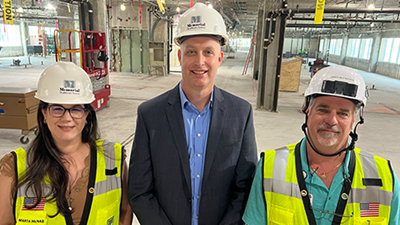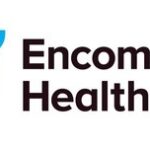

 Perhaps the only point of agreement regarding the current health care system in our country is that it is not adequate: the U.S. spends twice the per capita dollars compared with any other nation in the world, yet we have high rates of infant mortality and preventable death; rising costs with rising numbers of uninsured; and discrepancies of care that follow racial and economic boundaries. Clearly we have evolved a complex system that is arguably not a “system” but rather a complex marketplace of medical services. This widespread and not unfounded discontent has produced a mandate for change, even though the details and theories regarding that change vary widely amongst individuals and groups. The current administration is very sensitive to this “mandate” and, whether you agree with the proposals or not, has made healthcare change a priority. As any wise politician would, the President is attempting to use the legislative urgency of the current economic crisis to pass his health care agenda. Although it is not yet certain how successful he will be, or exactly what healthcare would look like in this country if he were to succeed, certain patterns emerge.
Perhaps the only point of agreement regarding the current health care system in our country is that it is not adequate: the U.S. spends twice the per capita dollars compared with any other nation in the world, yet we have high rates of infant mortality and preventable death; rising costs with rising numbers of uninsured; and discrepancies of care that follow racial and economic boundaries. Clearly we have evolved a complex system that is arguably not a “system” but rather a complex marketplace of medical services. This widespread and not unfounded discontent has produced a mandate for change, even though the details and theories regarding that change vary widely amongst individuals and groups. The current administration is very sensitive to this “mandate” and, whether you agree with the proposals or not, has made healthcare change a priority. As any wise politician would, the President is attempting to use the legislative urgency of the current economic crisis to pass his health care agenda. Although it is not yet certain how successful he will be, or exactly what healthcare would look like in this country if he were to succeed, certain patterns emerge.
It is unlikely that we will long tolerate a system where large portions of the population do not have ready access to care. Ethical debate regarding whether healthcare is a right or a privilege aside, it is simply too expensive to permit people to cluster in emergency rooms at the public expense for care that could have been delivered in clinics or doctors offices. It is also simply too expensive to permit the inevitable progression to end-stage disease, with its requirement for more costly and extensive treatments. Therefore, the expansion toward more universal coverage that includes both access and prevention – whether through a single payer or through multiple payers in a competitive marketplace or anything in between – is somewhat inevitable.
The second transformation that is apparent is the long-overdue introduction of effective integration of electronic information into medical practice. It is somewhat inconceivable that we have refined medical techniques that can image any area of the body down to one half of a millimeter, that we can begin to unlock the mystery and power of the human genome, that we can discover the role of stem cells in brain and heart regeneration, and we cant seem to get medical information from one place to another. Confidentiality is of prime importance, but it is not a trivial matter in banking either, yet we can put a piece of plastic into a machine in Paris or Dubai or Beijing and pull money from our account in Miami. The effective introduction and use of medical information, despite the longstanding resistance from many within the profession, has become virtually inevitable.
So what does all of this have to do with nursing? Everything. The new age of medicine presents the nursing profession with incredible opportunities. Along with more universal coverage will be the demand for more effective disease prevention and management. Several models of nurse-run programs to help manage congestive heart failure and diabetes having already been developed. Just as in the hospital, the medical and nursing professions complement each other, so to in the physicians office or clinic, there is an expanding opportunity for nursing participation in patient care. With the electronic age comes the ability for email communication between patients and their health care professionals. Nurses can provide an essential link in this chain of communication, performing a vital triage function not dissimilar to that currently performed by nurses in the emergency room.
Whatever the shape of medicine to come, it is clear that nurses will play an essential and expanded role in its delivery.
Post Views: 744
 Perhaps the only point of agreement regarding the current health care system in our country is that it is not adequate: the U.S. spends twice the per capita dollars compared with any other nation in the world, yet we have high rates of infant mortality and preventable death; rising costs with rising numbers of uninsured; and discrepancies of care that follow racial and economic boundaries. Clearly we have evolved a complex system that is arguably not a “system” but rather a complex marketplace of medical services. This widespread and not unfounded discontent has produced a mandate for change, even though the details and theories regarding that change vary widely amongst individuals and groups. The current administration is very sensitive to this “mandate” and, whether you agree with the proposals or not, has made healthcare change a priority. As any wise politician would, the President is attempting to use the legislative urgency of the current economic crisis to pass his health care agenda. Although it is not yet certain how successful he will be, or exactly what healthcare would look like in this country if he were to succeed, certain patterns emerge.
Perhaps the only point of agreement regarding the current health care system in our country is that it is not adequate: the U.S. spends twice the per capita dollars compared with any other nation in the world, yet we have high rates of infant mortality and preventable death; rising costs with rising numbers of uninsured; and discrepancies of care that follow racial and economic boundaries. Clearly we have evolved a complex system that is arguably not a “system” but rather a complex marketplace of medical services. This widespread and not unfounded discontent has produced a mandate for change, even though the details and theories regarding that change vary widely amongst individuals and groups. The current administration is very sensitive to this “mandate” and, whether you agree with the proposals or not, has made healthcare change a priority. As any wise politician would, the President is attempting to use the legislative urgency of the current economic crisis to pass his health care agenda. Although it is not yet certain how successful he will be, or exactly what healthcare would look like in this country if he were to succeed, certain patterns emerge. 
























